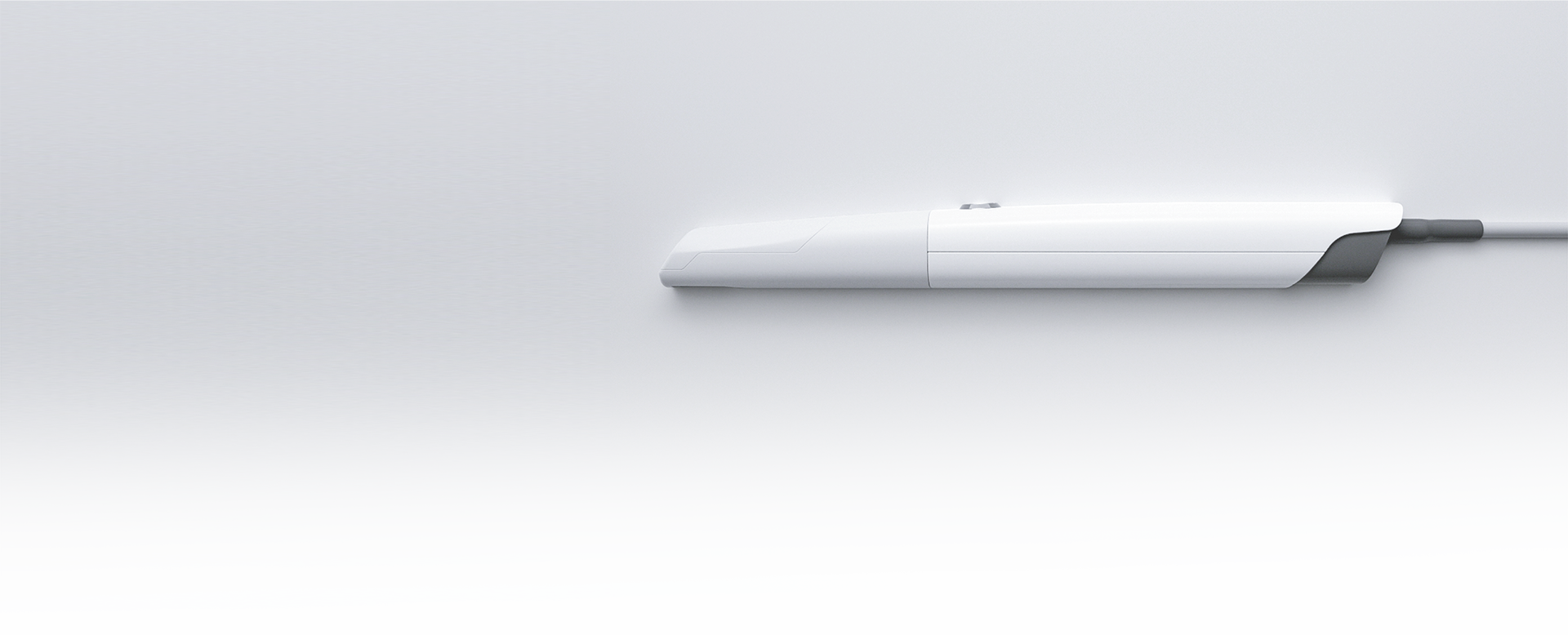
How Intraoral Scanners Help Dental Laboratories?
Wed-12-2022Health TipsDigital dentistry plays a key role in streamlining workflows for dentists and dental laboratories. It helps clinics design the most suitable aligners, bridges, crowns, etc. With traditional dentistry, the same job can take a long time. Digitization has greatly helped in making processes faster and more efficient.
When scanning with an intraoral scanner such as the Panda series of scanners and sending its data to a dental laboratory, the results are very high quality and accurate. To understand how and where intraoral scanners can help, let us discuss digital dentistry in detail in this blog.
Digital dentistry has undoubtedly revolutionized the way dentists work, improving work efficiency. However, digitization has helped dental laboratories the most.
- Creating an efficient and predictable workflow
Traditional dental methods of taking impressions and making dental implants are prone to human error and are time consuming. With the help of the PANDA series of scanners, these problems have been eliminated and the scans are more precise and of superior quality. Here are four ways digital scanning can improve dental laboratory work:
*Fewer steps to decide on treatment procedures
*Improved workflow
*No waiting
*Helps to make dental restorative solutions in an efficient and improved manner
- Help develop a dental treatment plan
Digital technology enables smoother and faster communication and also facilitates proper data exchange between laboratories and clinics. With the help of digital impressions, technicians can easily and accurately create prosthetic structures. Therefore, it can be said that digital dentistry helps to eliminate errors and risks associated with creating dental restorative solutions such as implants, bridges, braces, aligners, etc.
- Prevent cross-contamination between laboratories and clinics
In traditional dentistry, the molds from which impressions are taken are sent to the laboratory where they can become subject to cross-contamination. Since no mold is used to take the impression in digital dentistry, both the patient and the laboratory staff are free from any type of infection.
- Helping provide high quality cosmetic dentistry
Cosmetic or restorative dentistry improves the appearance of teeth through a range of treatment options. Intraoral scanners enable dentists to assess a patient’s mouth, simulate a smile, exchange data and communicate with the laboratory while creating restorations. Here, lab technicians can design restorative solutions after mapping data on occlusal, occlusal and contact points. Technicians can easily compare designs that allow them to match the upper and lower arches before considering printing. So, with the help of digital dentistry, dentists can now help their patients achieve a smile that was not possible with the help of traditional dentistry.
As we’ve seen here, digital dentistry has been a boon for dentistry in many ways. In fact, digital scanners such as the PANDA series of scanners have changed the way dentists deliver dental services, treat patients and work in dental laboratories. It removes the risky, cumbersome processes associated with traditional dentistry and helps simplify data flow, communication and data exchange. As a result, dental offices can provide a superior patient experience and achieve greater patient traffic.
Recent posts
Categories
- Case Sharing (1)
-
Product Introduction (16)
- Upgrade Your Scanning Experience with the New Panda Center
- Panda Scanner Orthodontic Simulation Intelligent Upgrade
- Panda Center New Features
- 2023.06.16 Freqty Cloud Update Log
- PANDA P3 New Functions Introduction
- PANDA P3 Intraoral Scanner will be Officially Launched on August 18th
- Why is the Digital Impression System Highly Recommended in Dentistry?
- New Function, New Inspiration
- How Can Intraoral Scanners Help with Orthodontics
- One-Click Installer is Now Available to All Customers
- Freqty Cloud Adds 3D Preview Function
- Freqty Cloud Adds a New Function
- Panda (Freqty) Cloud URL Link Change Notification
- Top Reasons Dentists Should Turn to Intraoral Scanner
- Panda Scanner — Focus on Intraoral Scanners
- Panda P2 Intraoral Scanner Opens A New Era of Oral Digitalization
-
Dental Exhibition (35)
- PANDA NEWS: IDS 2025 Ended Successfully
- PANDA NEWS: DenTech China 2024 Ended Successfully
- MIDEC 2023 Malaysia Successfully Concluded!
- Panda Scanner Invites you to Participate in the MIDEC Malaysia 2023
- PANDA Series of Intraoral Scanners Were Well Received at IDEX 2023
- Day 1 of IDEX 2023 was a huge success for Panda Scanner!
- Panda Scanner Invites You to Participate in IDEX Istanbul 2023
- Panda Scanner Showcased PANDA smart Intraoral Scanner at IDS
- Great First Day of IDS 2023
- CDS 2023 was a Great Success
- The 28th South Dental China International Expo Ended Successfully
- AEEDC Dubai 2023 Ended Successfully
- Freqty Presents PANDA P3 Intraoral Scanner at AEEDC 2023
- Day 2 of AEEDC 2023 Dubai is Underway
- Panda Scanner at the 40th CIOSP
- Panda Scanner Sincerely Invites You to Attend AEEDC 2023
- Greater New York Dental Meeting 2022 Ended Successfully
- Panda Scanner is Waiting for You at Greater New York Dental Meeting
- GNYDM 2022 Invitation
- Panda Scanner will be at the GNYDM 2022 at the end of this month
- Panda Scanner is going to New York!!!
- IDEM 2022 in Singapore Ended Successfully
- The 22nd Brazilian Orthodontic Congress
- Panda Scanner is about to Participate in IDEM 2022, Singapore
- China Northeast Dental Exhibition Witnesses PANDA P2 Hard Power
- 39° CIOSP Exhibition Ended Successfully
- Collection of Exhibitions and Events from March to June 2022
- The 13th Congresso ABOR 2022 is in Fortaleza
- Panda Scanner Participates in AAO Annual Session
- Five Dental Exhibitions are Underway
- Panda Scanner Participates in the 2021 CDS Shanghai Dental Show
- PANDA P2 Intraoral Scanner at 2021 IDS Cologne International Dental Show
- Sino-Dental x PANDA P2 Intraoral Scanner
- PANDA P2 appeared at the South China International Dental Show
- The 27th South China International Dental Exhibition
- Cooperation Case (5)
-
Training Courses (12)
- PANDA ACADEMY: How to do a 360° denture scan?
- PANDA ACADEMY: Step-by-step Scanning of Edentulous Cases
- PANDA ACADEMY: How to Scan an Implant Case?
- PANDA ACADEMY: Precautions for Wreless Connection of PANDA P4
- PANDA ACADEMY: How to Scan the Scanbody?
- PANDA ACADEMY: How to scan edentulous cases?
- PANDA ACADEMY: What can an intraoral scanner bring you?
- PANDA ACADEMY: How to Activate Your Scanner?
- PANDA ACADEMY: How to Connect Your Scanner?
- PANDA ACADEMY: Follow the digital dentistry trend
- PANDA ACADEMY: Recommended Computer Configuration
- Together with One Heart to Build a Better Future Intraoral Scanner Data Docking and Application Training Class
-
Health Tips (6)
- How Digital Dentistry Can Make Dentistry More Effective
- How Intraoral Scanners Help Dental Laboratories?
- How Important are Dental Intraoral Scanners?
- Are Intraoral Scanners Beneficial for Your Practice?
- How to Make Better Use of Your Intraoral Scanner
- Top 6 Tips for Choosing the Right Intraoral Scanner
-
Activity (13)
- Participate in the online lucky draw to win a free PANDA P3 intraoral scanner!
- Get Your Free Intraoral Scanner at AEEDC 2024
- Get Your Free Intraoral Scanner at AEEDC 2024
- Greater New York Dental Meeting 2023 Ended Successfully
- Coming Soon in November!
- Freqty Public Welfare Trip
- National Day Holiday Notice
- Panda Scanner Scan Speed Competition
- Digital Application Experience Activity and the First Intraoral Scanner Skills Competition
- PANDA P3 Officially Launched
- PANDA P2 Intraoral Scanner Settled in the Oral Health Science and Technology Museum
- Oral Medical Industry Association Annual Meeting ended successfully
- 2021 Customer Thanksgiving Event





